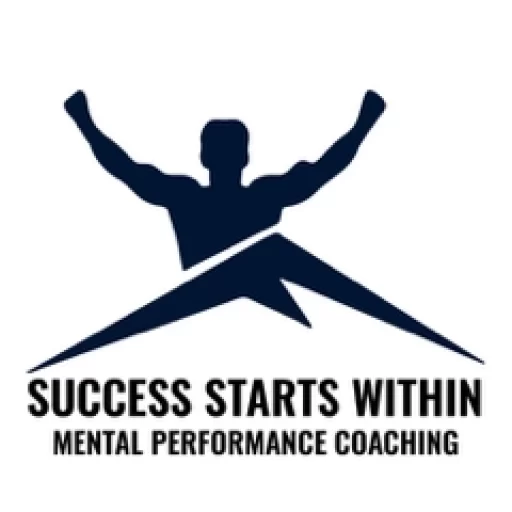If you can imagine it, you can achieve it. Have you ever heard this statement or some version like it before? Well, if you have then you may already know the power of visualization. And if you haven’t, don’t worry, by the end of this article, you’ll understand just what visualization is and how to harness it for your own success.
Before we go any further, I am sure there is some skepticism filling your head right now. I understand where you’re coming from because when I first began hearing about visualization it seemed so silly and weird. But just stick with me, and you’ll see how even the most successful and influential athletes, performers, and other individuals have all used this skill to achieve success.
What is Visualization
The process of visualizing is pretty simple really, you create an image or scene in your head depicting whatever it is you want. Without being aware of it, we do this all the time already.
When reading a book, for example, we often paint a picture in our head of what we believe is going on. Also, daydreaming is another form of visualization.
Visualization is often referred to as mental rehearsal, especially when dealing with it in an athletic and performing sense. This is because you can actually practice what it is you’d like to accomplish in your mind.
By going into great detail, we can gain the same results as we would if the act were actually being performed.
We can use visualization for any aspect of our life, no matter how big or small. Athletes use it to see themselves performing their sport successfully, speakers use it to visualize themselves giving a powerful speech, and weightlifters use it to see themselves hitting a big lift.
Also, we can visualize ourselves in better health, in a certain type of relationship, with more money, in a dream career, and any other area we’d like to make success happen.
But how can this be? How can a simple imagination exercise benefit us so much, and actually attract the things we want in life? Here lies the true power of visualization, and how it brings about success in everyone’s life who makes the skill a habit.
Power of Visualization
I remember when I was first introduced to visualization.
Back in high school, there was a senior on the baseball team when I was a freshman. Before the games, he would go out to first base where he played, crouch down, and close his eyes.
As a high schooler I thought this was a bit weird, and so did my teammates. But it wasn’t weird, we were just not aware of it. Needless to say, I saw first-hand the power of visualization.
This guy hit like crazy and was a vacuum at first base. Still, I wasn’t quite sure what him closing his eyes did or why it helped him hit. But, looking for ways to improve myself I began to use it the next year.
Visualization is now part of my daily routine. Every morning I see myself accomplishing all the goals I have in place. Also, during my workout, I’ll visualize before a big set or when trying to hit a new personal best.
As you can see, I am a firm believer in the power of visualization. But I have to admit I didn’t use it as much as I should have during my college years.
My mental game coach, John Ellsworth, created a great routine for me to use before games. I incorporated this into baseball, but I never understood the benefits visualization can have on all areas of my life.
It wasn’t until I read The Secret that I truly discovered all the power that comes out of mental imagery. After reading the book I began my daily routine of visualization, and I don’t plan on stopping any time soon.
The benefits gained from visualizing are well documented. Jack Canfield points to four distinct benefits that we can get when implementing it into our daily lives. (Read his full post here).
Four Benefits of Visualization:
- Visualization activates the creative subconscious, helping to create new ideas.
- It programs the brain to be receptive to recognizing the resources needed to achieve our goals.
- It activates the law of attraction, which will draw into our lives the people, resources, and experiences needed to achieve our dreams.
- Builds motivation to take the steps necessary for achieving our goals.
In addition to these four benefits, I would say one of the greatest results gained from visualization is confidence and mastery in a skill. The power of visualization to build confidence in ourselves is truly incredible, and has a great impact on reducing the fear of failure and performance anxiety.
With the ability to repeatedly see ourselves succeed at a task, internally we begin to believe we have actually done it. This boost in confidence is not only my assumption but is backed by scientific research.
Basically, the reason visualization works in programming the subconscious and helping us master skills is due to how neurons respond to the imagery. When we close our eyes and picture performing an act, the neurons in our brain interpret the image in an equal way to a real-life situation.
When we visualize, the brain creates a new neural pathway that is aimed to create consistency between our bodies’ actions and what we’ve imagined. We are pretty much getting all the same benefits within the brain by imagining an act as we would if we performed the act in real life.
This is the incredible power of visualization!
Examples of Visualization at Work
When talking about a technique such as visualization, it’s nice to see real-life examples of people using it to achieve success. Through my research, I have come across countless individuals who embody the idea that visualization helped them achieve their goals. Here are a few examples of some famous people you’ve probably heard of that are open about the benefits of visualization.
Jim Carrey
One of the most well-known stories of a celebrity using visualization is Jim Carrey. In an episode of Oprah, he discusses how in the late 1980’s he would drive up to Mulholland Drive and visualize directors interested in him and him receiving acting jobs.
Then, in the early 1990s, Carrey wrote a check to himself for $10 million and dated it Thanksgiving 1994. Amazingly, 1994 ended up being the year he made about $10 million from Dumb and Dumber.
Jim Carrey believed he would be successful and used the power of visualization in addition to his hard work to achieve massive success in his career.
Arnold Schwarzenegger
Here is a man who experienced massive amounts of success in his career, across a multitude of fields. First, Arnold was a world champion bodybuilder, then he became a major action hero, and then the Governor of California.
Arnold points to his mind as the first and foremost key to his success. In each of his career paths, an image was held in his mind of what he wanted to be. Arnold would see himself as if his goal was already accomplished, and then it would unfold for him in reality.
Here is a great clip of Arnold discussing how he incorporated visualization into his life to achieve each goal:
Oprah Winfrey
Not only did guests on Oprah talk about the use of visualization in their lives, but Oprah herself points to it as one of the ingredients for her success.
Oprah’s story is a truly amazing one. From a young age she held a vision in her mind of who she wanted to become.
She is now a strong advocate of the power of visualization and the benefits it can have on our lives.
Connor McGregor
Known for his loud and brash confidence, Connor McGregor has become one of the best UFC fighters of all time. The success he has achieved in the octagon speaks for itself, but it’s the expectation and belief that Connor himself speaks with that is so inspiring.
This confidence comes from the vision he holds of himself in his mind. McGregor was a champion in his own eyes long before he won any titles.
He takes the power of visualization to an even more detailed scale, however, by going through a distinct mental rehearsal. Connor sees the shots and sequences of fights in his mind, instilling that confidence and belief in himself that he can and will accomplish them, and the results show through his fighting.
Michael Phelps
Here is the greatest Olympian of all time, and he utilized the power of visualization within his training. His coach, Bob Bowman, taught Phelps how to create a video in his mind of races.
Before bed each night, and again in the mornings, Phelps would rehearse races in his mind. In detail, he pictured every possible scenario and all the obstacles that could get in his way. The end of the visualization would always be him celebrating and feeling himself win the race.
Here’s a video of Phelps talking about the mental videos he would create with his coach Bob Bowman:
Are you starting to see how powerful visualization can be?
If you want to read a few more examples of athletes using visualization, check out this article by Dr. Patrick Cohn titled, Sports Visualization: The Secret Weapon of Athletes
Before I go into a good visualization technique you can begin to use daily, I would like to comment on a common misconception about mental imagery.
Some people believe that visualization is being pushed as a replacement for work.
By no means do I believe this is true. In fact, I think that one of the great powers of visualization is the motivation it provides us to work harder and stay focused on our goals.
Seeing ourselves achieve success in our minds only builds that inner feeling and belief that this can be done and will be accomplished, which pushes us to go out and get it.
Alright, now it’s time to get into a simple and easy to follow technique that you can begin to use daily so that you can start benefiting from the effects of visualization.
“Seeing ourselves achieve success in our minds only builds that inner feeling and belief that this can be done and will be accomplished, which pushes us to go out and get it.”
Simple But Powerful Visualization Technique
For this visualization technique, you are going to want to find a spot where you will be undisturbed for the entire time. I would say give yourself anywhere from 5 to 10 minutes, possibly longer if need be.
Okay, so the technique I am going to discuss is the one I use daily. There are other ways you can visualize, which I will link to below, but I find this one to be the simplest and best one for me. It is comprised of a 3-step process as follows:
Step 1: Get into a Comfortable Position
The first step is to find a quiet place where you will be undisturbed and get into a comfortable position. It can be either lying or sitting down. I prefer to sit because laying down to me signifies sleep, and so my visualization is not as clear in that position.
If you choose to sit, the only recommendation I have is to make sure your back is straight. This increases focus and puts the body in a nice and strong position.
Okay, now that you’ve gotten yourself in a quiet and comfortable posture, it is time to move onto step two.
Step 2: Breathe
The second step is all about quieting and calming the mind, to prepare it for visualization. This is done best through deep breathing.
Here, I like to close my eyes to really feel myself calm down and go into my mind.
Take 10 slow, deep breaths in and out through your nose. Try to focus only on your breath and nothing else. You will start to really feel calm and at peace.
Sometimes my mind is really wandering, so I need to take more than 10 breaths, and that’s perfectly okay. The goal in this step is to gain a tranquil mind, so however long it takes to accomplish this through breathing, do what is necessary.
Now, you should be in a comfortable position, with your eyes closed and mind still. It is now time to begin the third and final step.
“Sometimes my mind is really wandering, so I need to take more than 10 breaths, and that’s perfectly okay. The goal in this step is to gain a tranquil mind, so however long it takes to accomplish this through breathing, do what is necessary.”
Step 3: Visualize
The third step is where the actual visualization takes place. A quick note here, you want to know what you would like to visualize before starting. This step is not the time to try and think about what to picture, because remember, the goal of the previous step was to get the mind completely quiet.
Begin by bringing the image of what you would like to visualize into your mind. You want to be as detailed as possible. Make it feel real to you.
I’ve found it much easier to visualize a scene rather than a static image because it mirrors real life.
Go into as much detail as you can. Are there sounds you would hear, maybe some smells? What about people, who else is there with you? The more detailed you can go, the more powerful the visualization will be.
A little secret that can take your visualization to the next level is to bring emotion into it. You should feel gratitude, happiness, excitement, and all other positive feelings, since what you’re visualizing should be something that would make you feel good.
Once you’re finished with the scene, take a few deep breaths to settle yourself back in the present moment, say thank you, and open your eyes.
Congratulations, you have just visualized!
As I mentioned, there are other visualization techniques that can be used. Psychology Today has a good article discussing some more techniques, you can check it out here. The blog, Mindfulness Minutes has some good techniques as well, though theirs are targeted more at relieving anxiety, they are valuable techniques none the less, check the article out here.
“A little secret that can take your visualization to the next level is to bring emotion into it. You should feel gratitude, happiness, excitement, and all other positive feelings, since what you’re visualizing should be something that would make you feel good.”
Final Thoughts
I am a firm believer in the power of visualization. I believe it can help us in all areas of our lives and is an important habit to adopt daily.
When accompanied by hard work and passion, visualization can truly serve as a key ingredient to success. By following the technique that I outlined, or any other one of your choice, you will be setting yourself on the right path to achieving your dreams.
I would love to hear about any experience you have had in the past with visualization. Is it a new concept to you, or something you have been previously introduced to?
I hope that this post serves you well on the road to success, and you can incorporate some of the information into your daily life. I wish you the best and hope you accomplish all your goals.
Please reach out to me if you have any questions or concerns related to sports and performance psychology.




